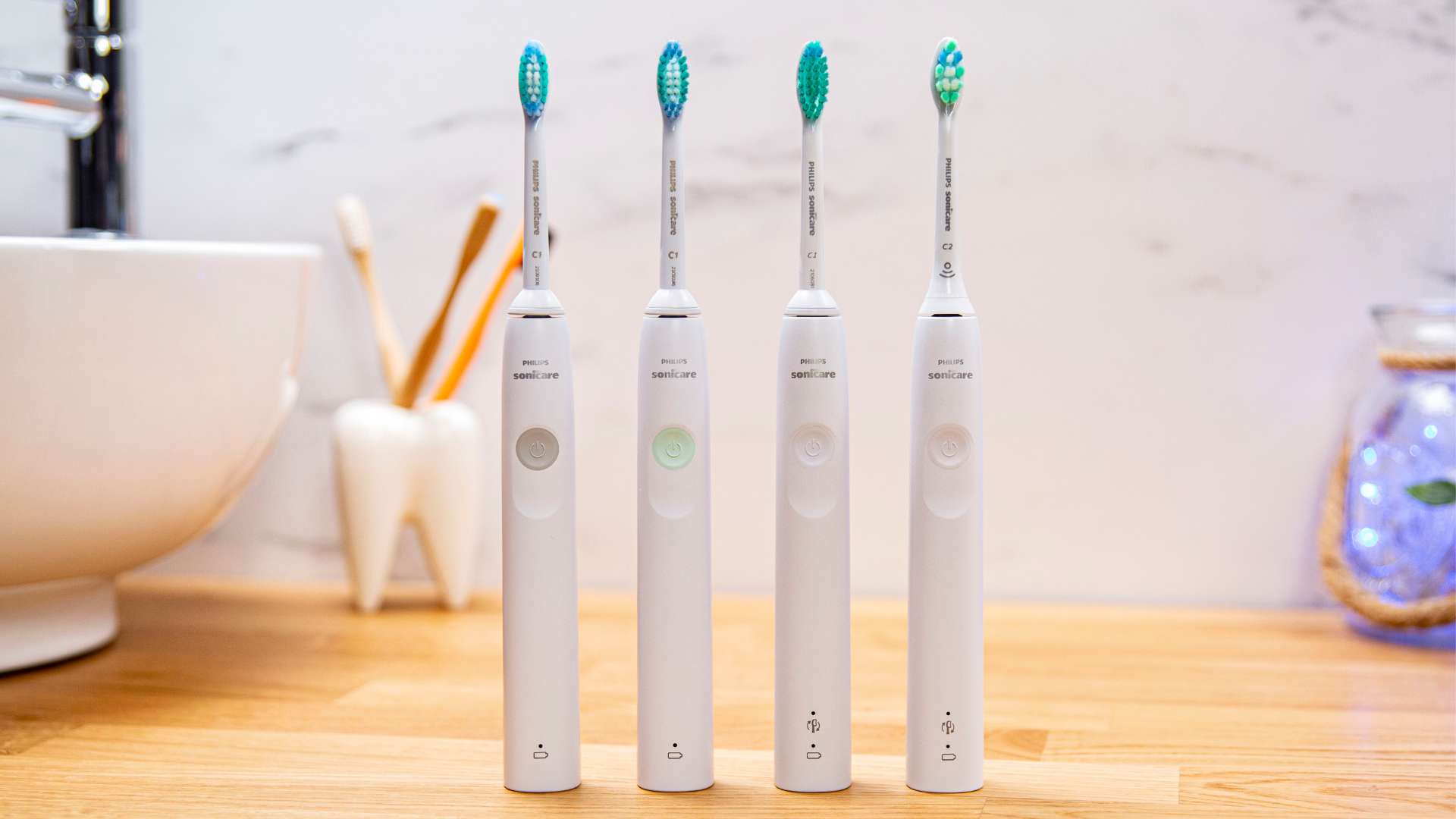
Which one would we choose?
Best overall: Philips Sonicare 4100 Series / Amazon, Walmart / ~$59.93
Best budget: Philips Sonicare 1100 Series / Amazon, Walmart / ~$32.99
The 4100 Series has all of the features our dentists recommended.
It provides the most thorough and satisfying clean of all the models compared here.
Although it provides the same number of brush strokes, the motor has been tuned differently for better results.
It is our main recommendation for the best Sonicare toothbrush.
As a more affordable option, the 1100 Series is our 2nd choice. It does lack the pressure sensor, though, so don’t brush with too much force if you opt for this.
All models within the 1000, 2000, 3000 and 4000 Series have a lot of similarities, including the same handle size, weight and battery. There is, in reality, little difference between them.
Key differences
1000, 2000, 3000 and 4000 Series are the broader product range names. Under each of these families might well be a few different models with subtle differences between each.
The following table lists the key differences between lead model in each range.
| Find out more |
| Electric Teeth Rating |
| Retail price |
| Approximate 3 year cost |
| Cleaning Action |
| Number of cleaning modes |
| Brushing intensities |
| Timer |
| Pacer |
| Pressure Sensor |
| Battery life |
| Battery type |
| Number of heads included |
| Brush heads included |
| BrushSync |
| Travel case included |
| Noise |
| Warranty |
| Buying options |
Please note. Every effort is made to ensure the key differences listed are correct, but these differences are subject to change without notice. Products and the box contents can be changed without notice and different variants can exist.
Brush vs brush comparisons
We are often asked which model we pick between 2 specific models. For example 1100 vs 21000. The table shows our answers.
| Models Compared | Our Choice |
|---|---|
| 1100 vs 2100 Series | 1100 Series (Amazon) |
| 1100 vs 3100 Series | 3100 Series (Amazon) |
| 1100 vs 4100 Series | 4100 Series (Amazon) |
| 2100 vs 3100 Series | 3100 Series (Amazon) |
| 2100 vs 4100 Series | 4100 Series (Amazon) |
| 3100 vs 4100 Series | 4100 Series (Amazon) |
Brush vs brush key differences
Click below for a list of the key differences between each model.
1100 vs 2100 Series
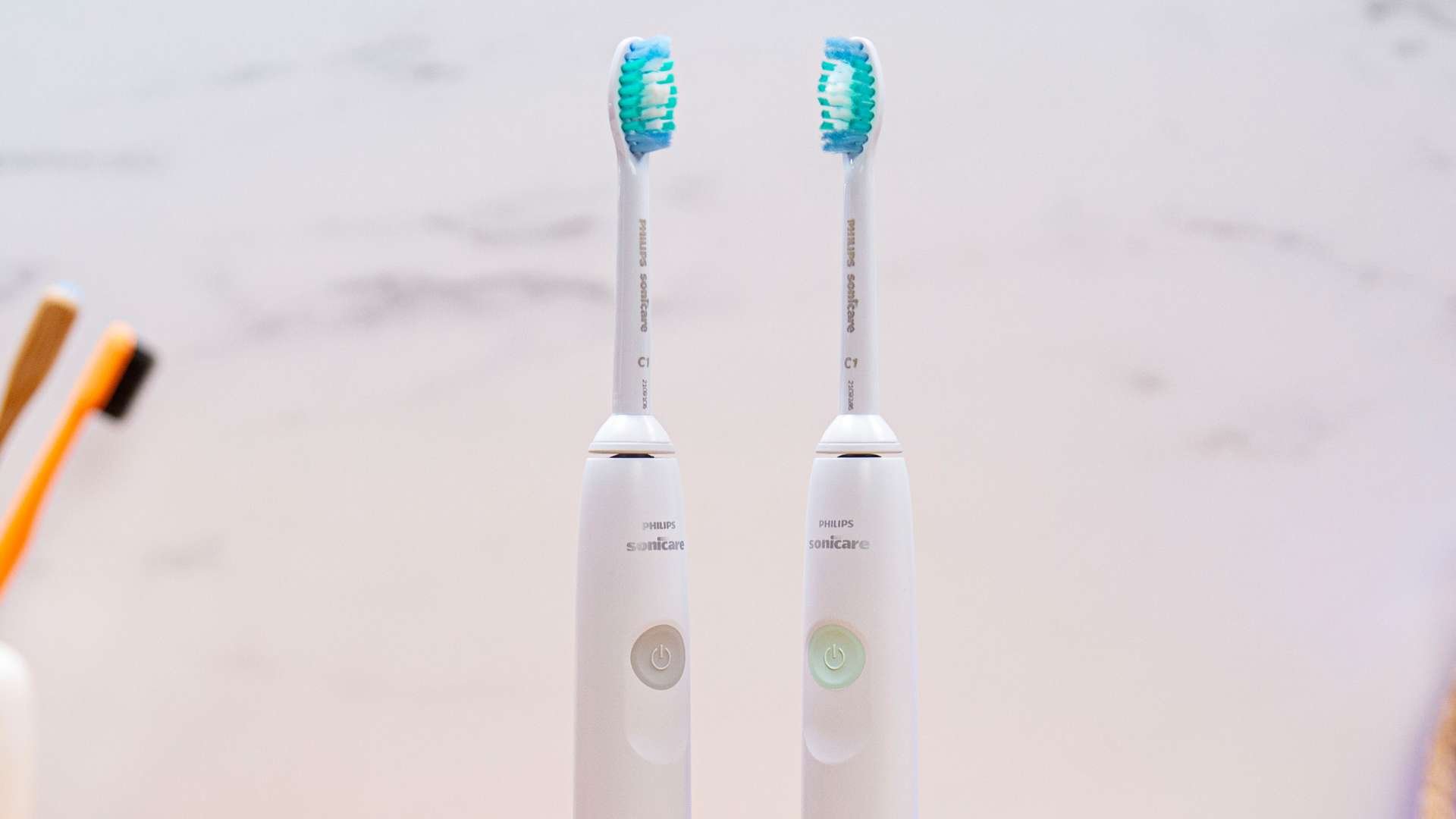
- The 2100 has 2 brushing intensities compared to the 1 intensity/mode of the 1100.
- The 1100 comes in white gray colour compared to the white mint of the 2100.
- The 1100 has a retail price of $29.99 compared to the $45 of the 2100.
1100 vs 3100 Series
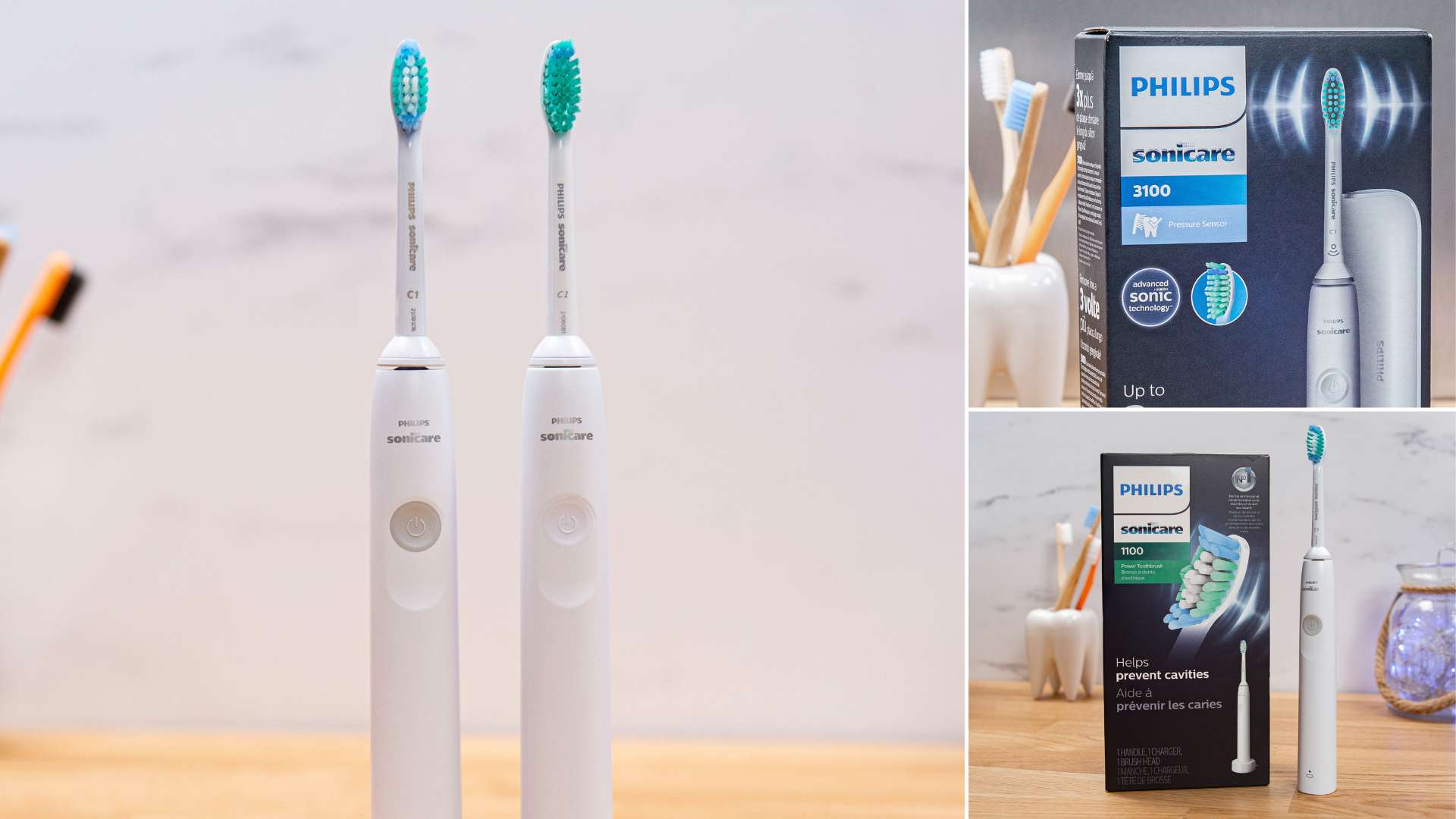
- The 3100 has 2 brushing intensities compared to the 1 intensity/mode of the 1100.
- The 3100 has a pressure sensor.
- The 3100 has a brush head replacement reminder system (part of BrushSync technology).
- The 3100 comes with 1 x C1 ProResults brush head compared to the 1 x SimplyClean of the 1100.
- The 3100 is available in 3 colour options, white, black and deep pink compared to the 1, white gray color option of the 1100.
- The 1100 has a retail price of $29.99 compared to the $59.99 of the 3100.
1100 vs 4100 Series
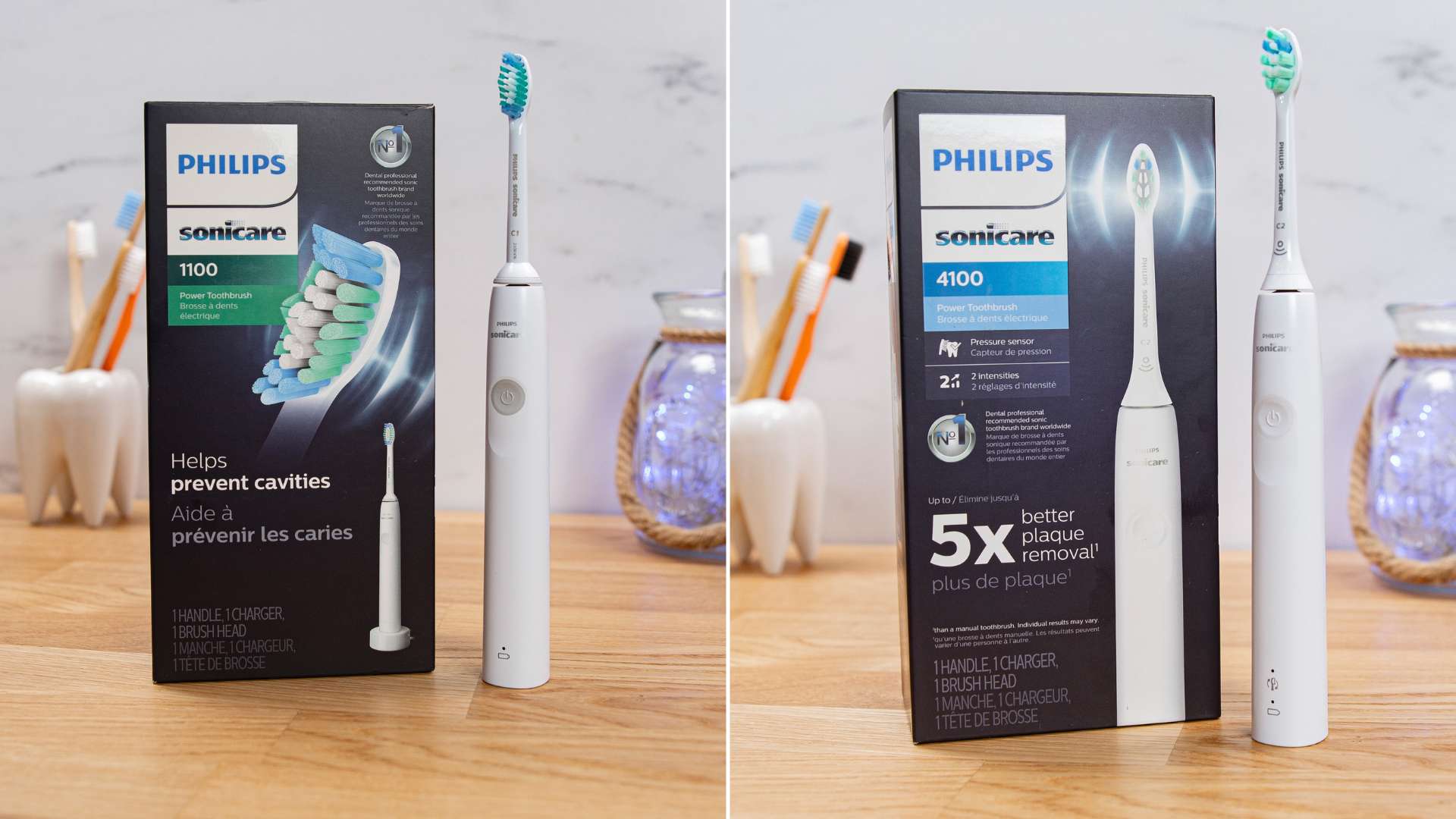
- The 4100 has 2 brushing intensities compared to the 1 intensity/mode of the 1100.
- The amplitude of 4100’s motor has been tuned to provide a more intense cleaning action, despite the same number of brush strokes.
- The 4100 has a pressure sensor.
- The 4100 has a brush head replacement reminder system (part of BrushSync technology).
- The 4100 comes with 1 x C2 Optimal Plaque Control brush head compared to the 1 x SimplyClean of the 1100.
- The 4100 is available in 4 colour options, white, black, sugar rose and deep pink, compared to the 1, white gray colour option of the 1100.
- The 1100 has a retail price of $29.99 compared to the $79.99 of the 4100.
2100 vs 3100 Series
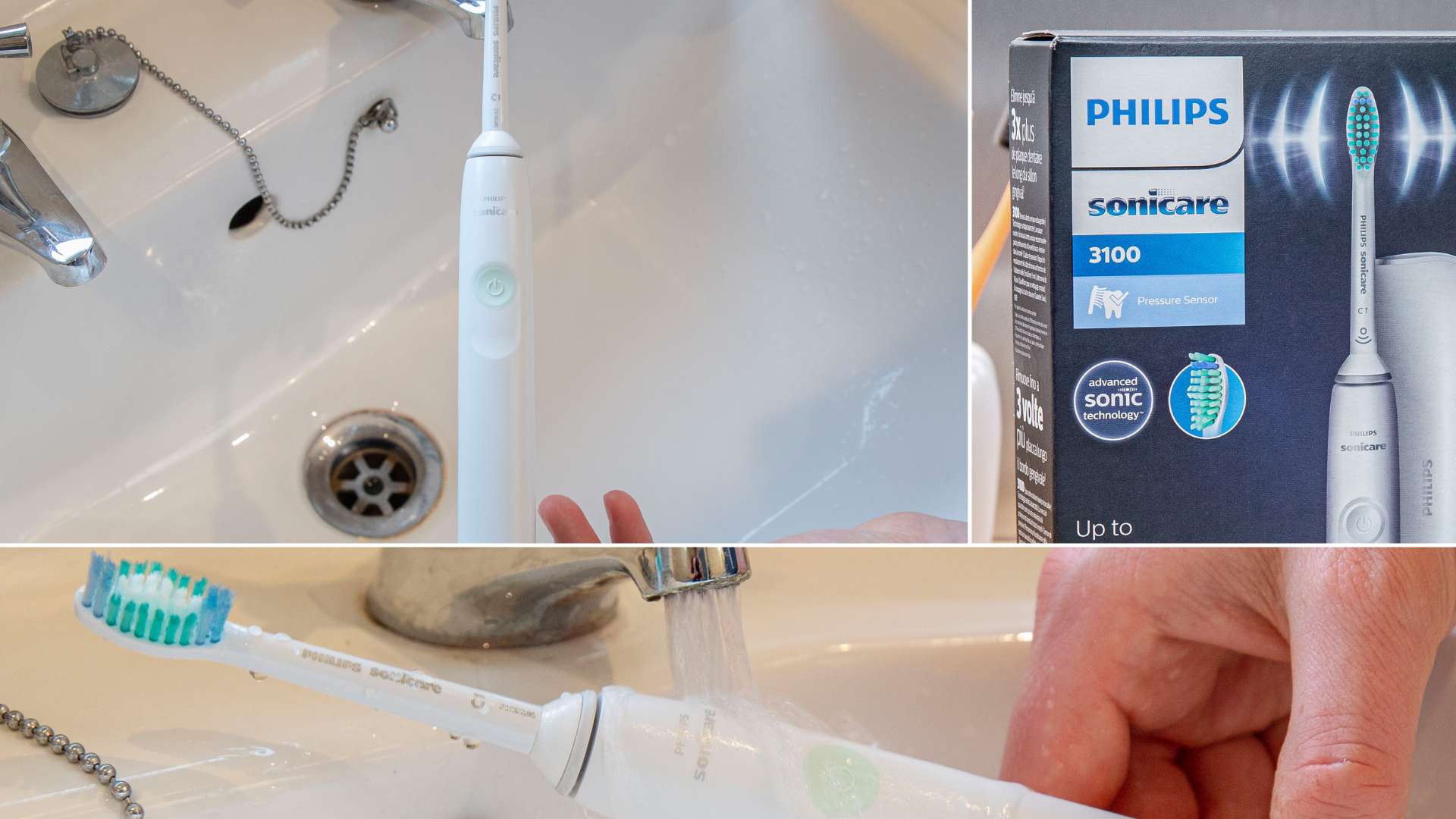
- The 3100 has a pressure sensor.
- The 3100 has a brush head replacement reminder system (part of BrushSync technology).
- The 3100 comes with 1 x C1 ProResults brush head compared to the 1 x SimplyClean of the 2100.
- The 3100 is available in 3 colour options, white, black and deep pink compared to the 1, white mint colour option of the 2100.
- The 2100 has a retail price of $45 compared to the $59.99 of the 3100.
2100 vs 4100 Series
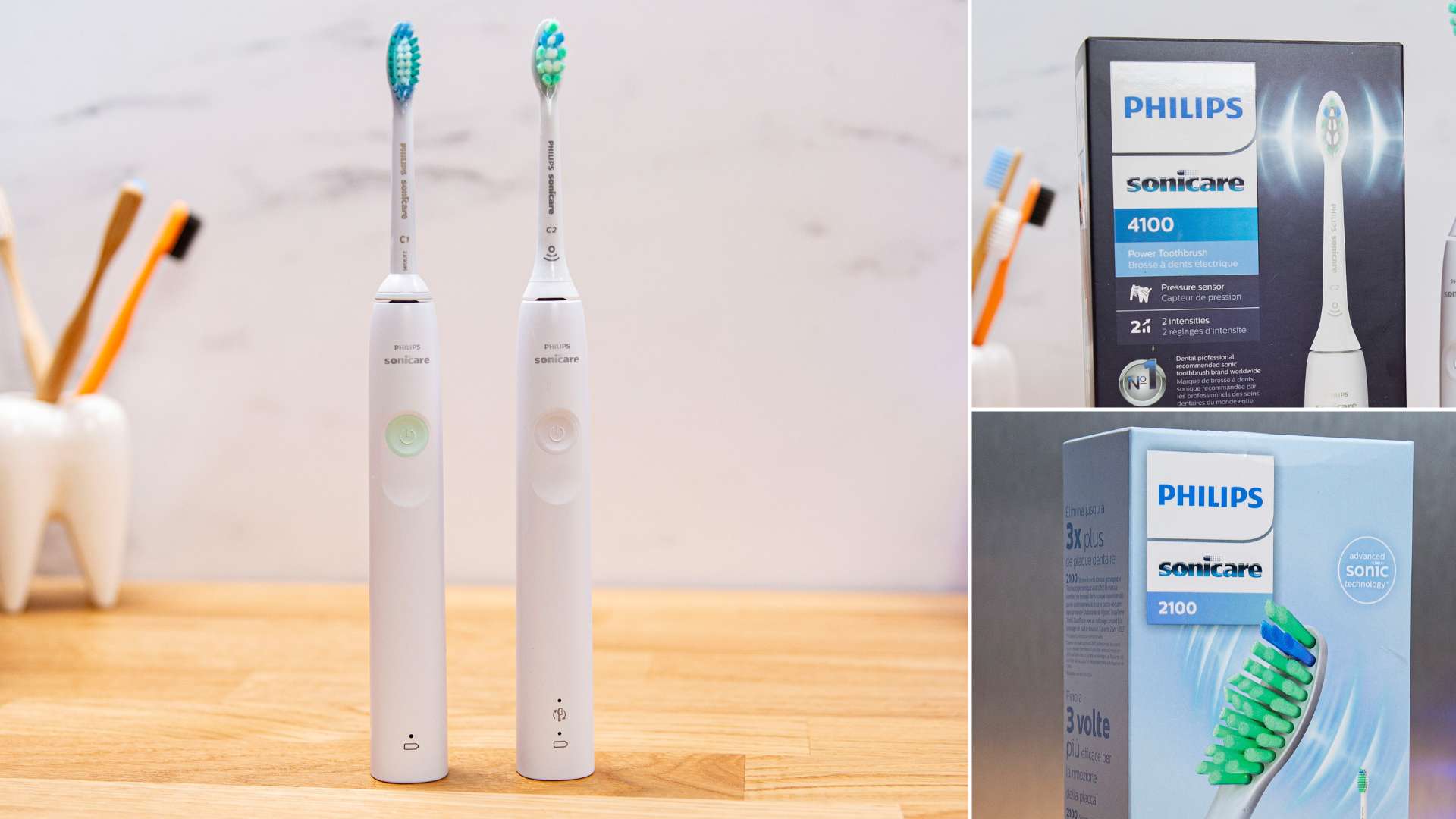
- The amplitude of 4100’s motor has been tuned to provide a more intense cleaning action, despite the same number of brush strokes.
- The 4100 has a pressure sensor.
- The 4100 has a brush head replacement reminder system (part of BrushSync technology).
- The 4100 comes with 1 x C2 Optimal Plaque Control brush head compared to the 1 x SimplyClean of the 2100.
- The 4100 is available in 4 colour options, white, black, sugar rose and deep pink compared to the 1, white mint colour option of the 2100.
- The 2100 has a retail price of $45 compared to the $79.99 of the 4100.
3100 vs 4100 Series
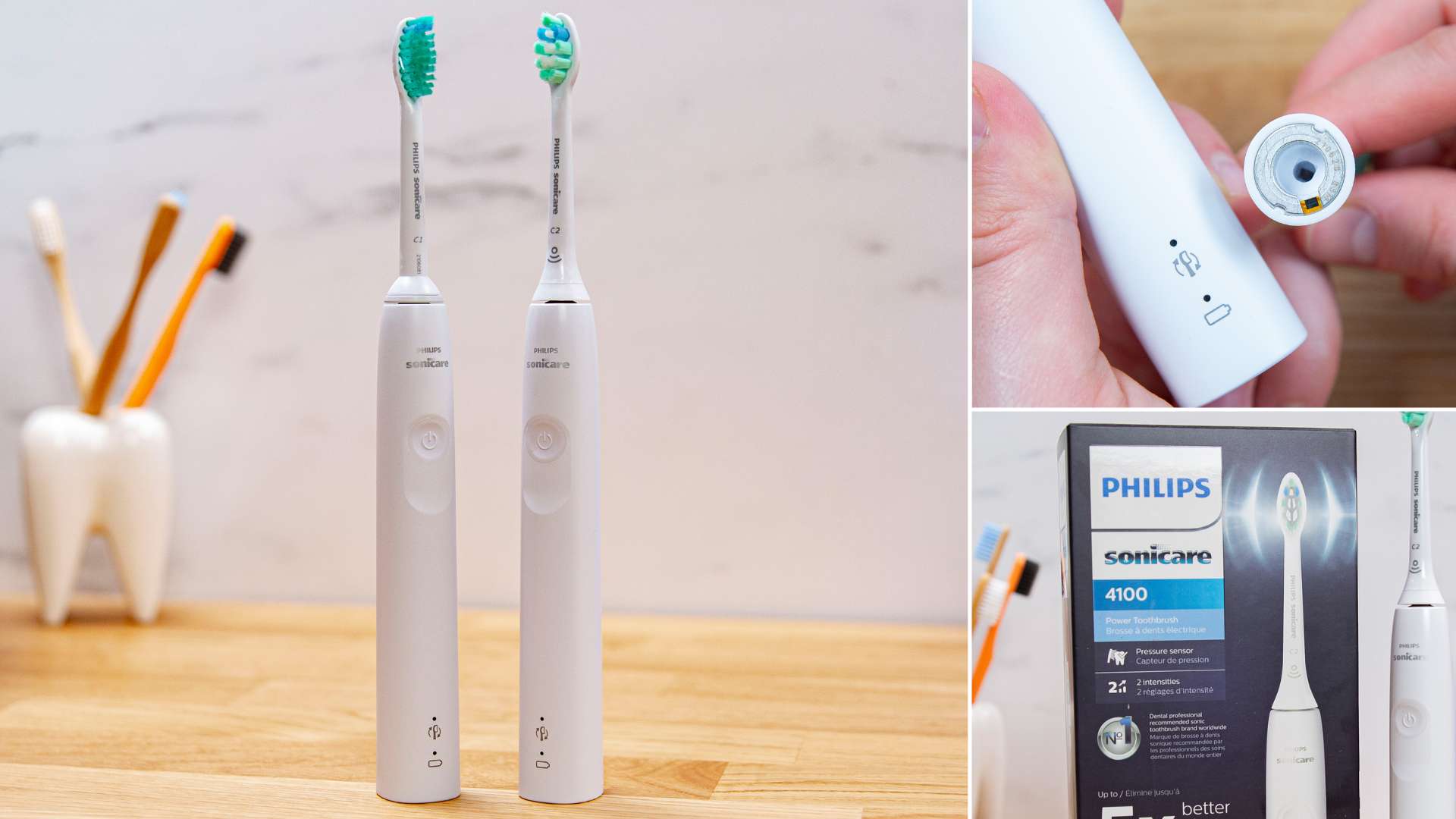
- The amplitude of 4100’s motor has been tuned to provide a more intense cleaning action, despite the same number of brush strokes.
- The 4100 comes with 1 x C2 Optimal Plaque Control brush head compared to the 1 x C1 ProResults of the 3100.
- The 4100 is available in 4 colour options, white, black, sugar rose and deep pink, compared to the 3 colour options, white, black and deep pink of the 3100.
- The 3100 has a retail price of $59.99 compared to the $79.99 of the 4100.
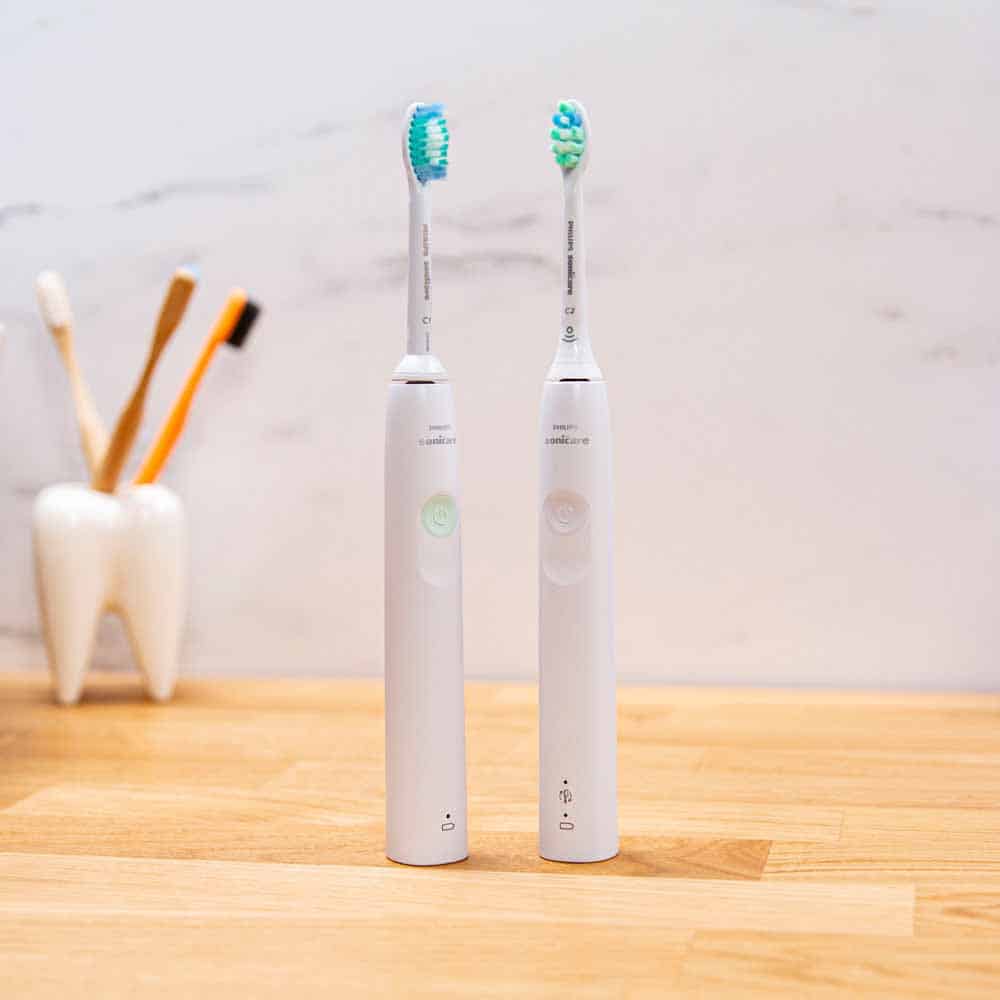
Detailed comparison: what’s the difference between the 1000, 2000, 3000 and 4000 Series Sonicare toothbrushes?
As the table and bullet point lists above have shown, the real differences between each of these models are fairly limited.
Each brush is most certainly more similar than it is different.
Here is a list of ways in which they are similar:
- Built-in 2 minute timer
- Built-in 30 second pacer
- Battery charge notification LED
- USB charging stand
- Handle size
- Handle weight
- Handle materials
- Clicky power button
- Push on, pull off brush heads
- Rechargeable Lithium-Ion battery sealed inside
- Water resistant brush handle
- 2 minute timer
The differences between each model relate more to everyday use and helping you to get the best from your oral care routine.
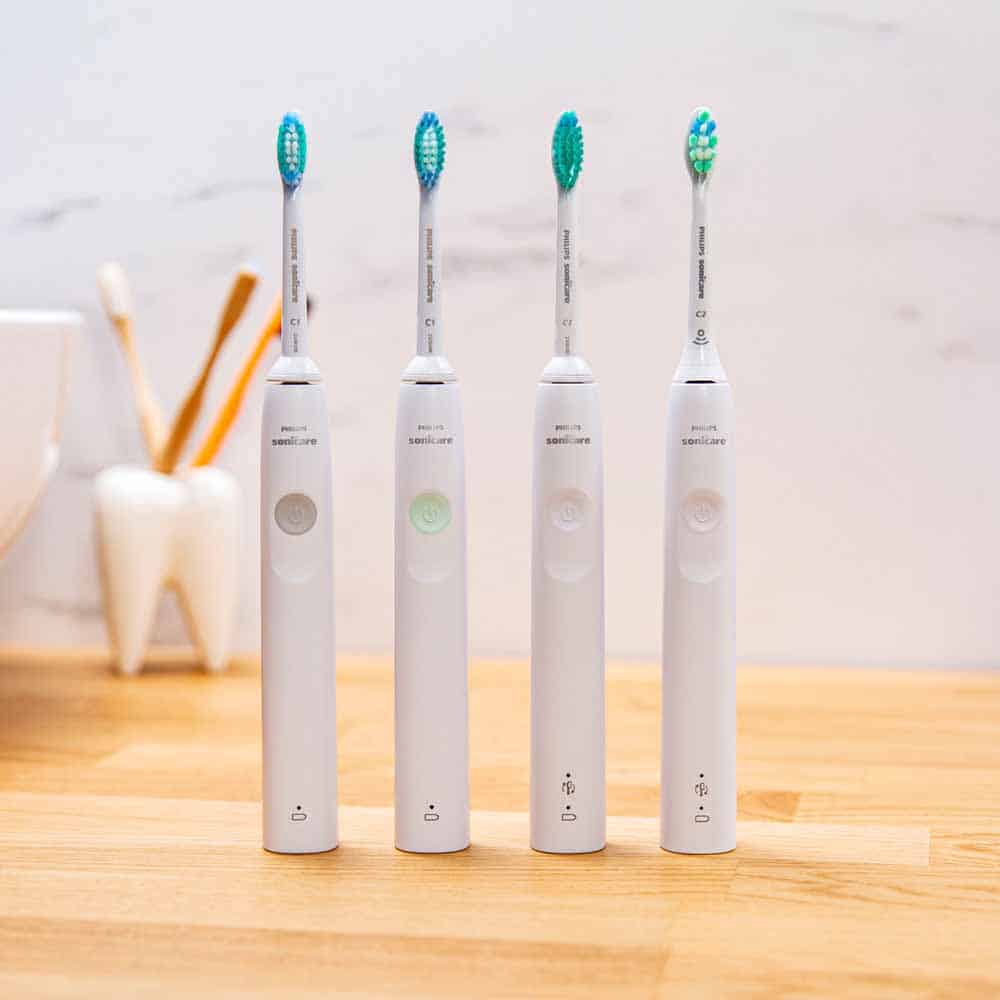
The 4100 Series does provide the best overall cleaning experience, as I explain in the section below. Its brush motor has been tuned for a more satisfying clean.
Although all 4 models have 1 cleaning mode, known as clean, the 2100, 3100 and 4100 do offer different brushing intensities though.
You have the choice of 2 settings, high and low.
As the names imply, low is a more gentle and less vigorous brushing sensation. This option is ideally suited for new electric brush users or those with sensitivity in the teeth or gums.
The higher of the 2 intensities will theoretically provide the best cleaning results.
You need to press the power button multiple times to switch between the modes. The handle will remember the last intensity used and default to this next time.
Due to the tuning of the 4100’s motor, its high intensity setting is more powerful than that of the 1-3000 Series.
I don’t have the data to specify exactly, but, in my opinion, the low setting of the 4100 feels more like the high setting on the 1100, 2100 and 3100.
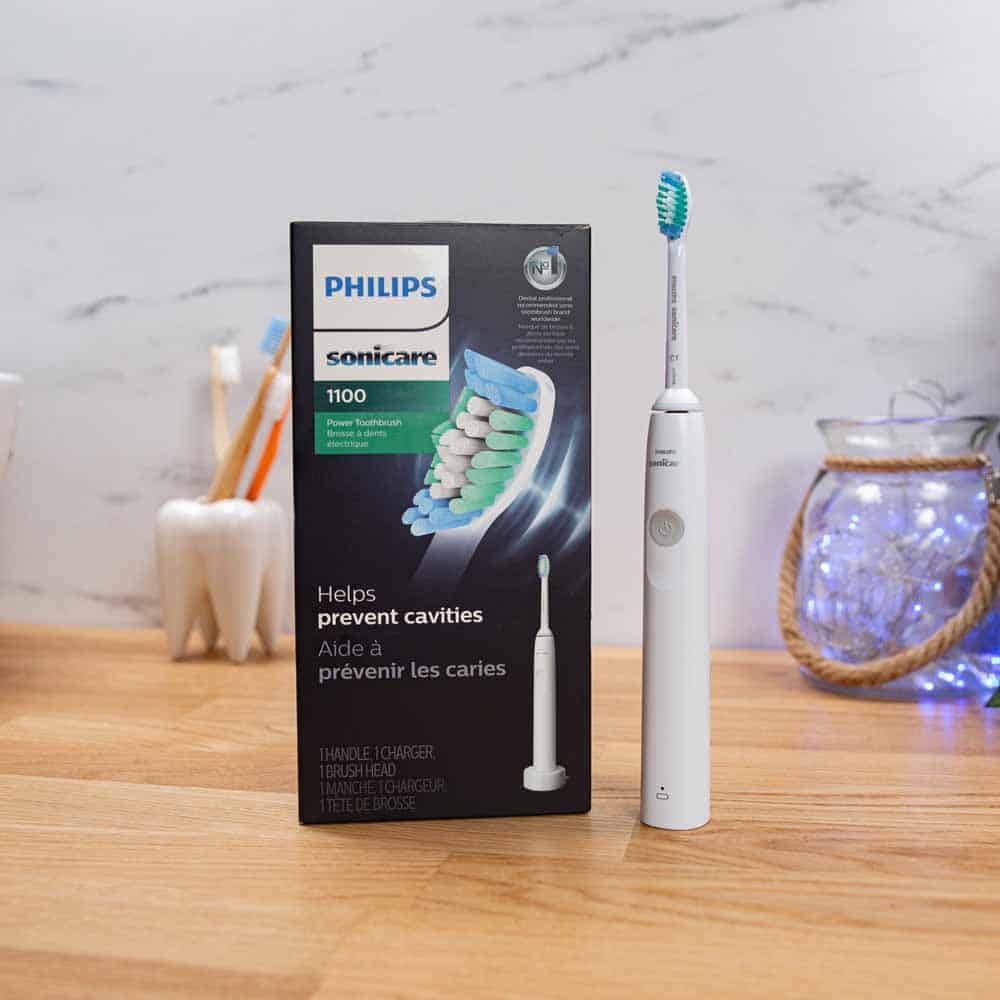
The 3100 and 4100 have the pressure sensor that the other models lack.
A pressure sensor alerts you when you apply too much force to the teeth and gums as you brush. It is a feature that our dentists prefer to be present in an electric brush.
When the sensor detects too much force, the handle vibrates with a pattern quite different from the normal vibration in the handle. It is difficult to ignore this.
At the same time, the brush head replacement light will flash, although this is nigh on impossible to actually see.
You will likely notice a change in the sound of the brush too.
Once any pressure is relieved, the vibration will stop.
The sensor is running all the time and will activate every time you apply too much force, unless it is disabled.
Another feature of both the 3100 and 4100 is the brush head replacement reminder light.

This is 1 part of BrushSync technology.
The handle reads and tracks an RFID chip built into a compatible brush head. Once the recommended usage time for that head has been exceeded, the reminder light will flash.
The light is a way of signalling to you and me as a user that it is time to replace the bristles. Failing to do so can compromise the cleaning results and our teeth and gums.
When a new head is fitted, the reminder light is essentially reset.
The heads supplied do differ.
Whilst technically these have been designed with slightly different goals in mind, they all do a good job of cleaning the teeth and removing plaque.
The greatest difference exists with the C2 Optimal Plaque Control head. It doesn’t have the W profile like the SimplyClean/ProResults. The clusters of bristles are configured differently.
I can’t really say 1 is much better or worse than the other, just slightly different.
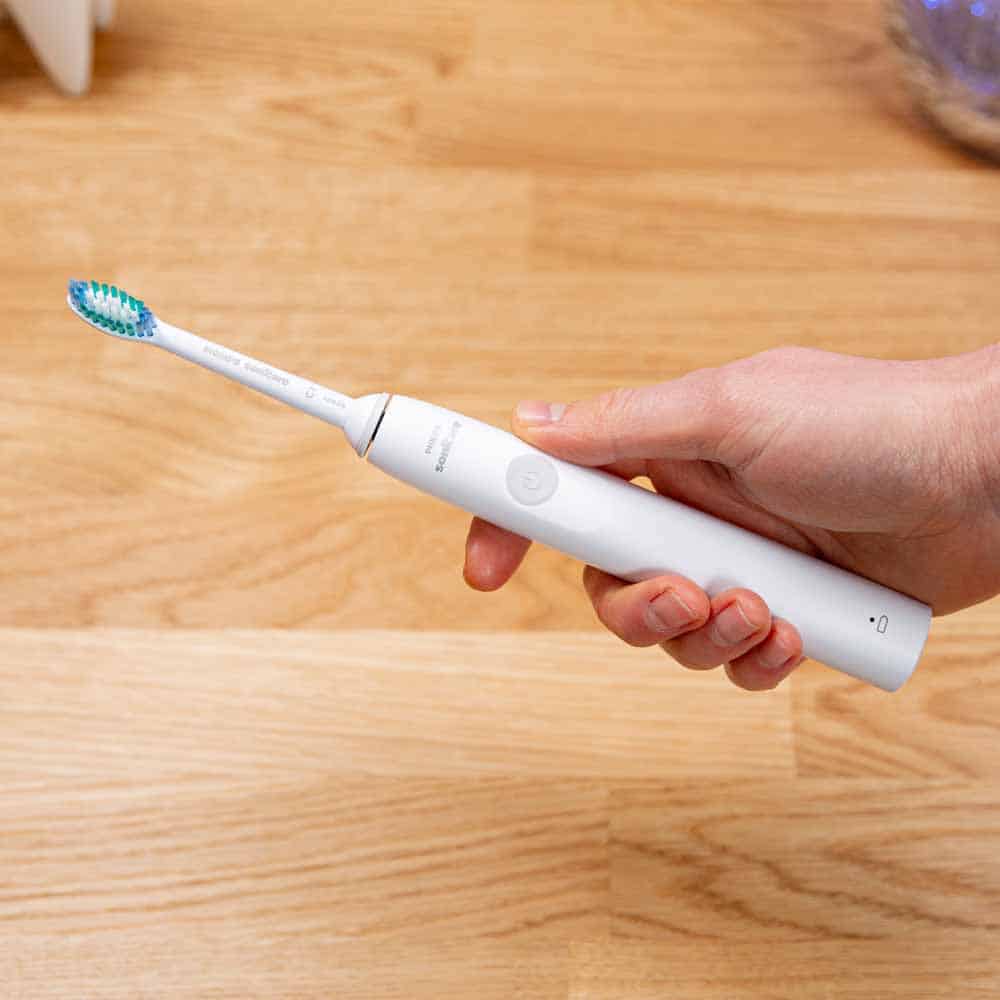
The only other way in which the brushes really differ is the color of the handle and accessories.
The default colour for these is white.
Some white handles have a coloured power button that gives an accent to the handle. Others have coloured handles with white brush heads.
It is only the black coloured handles that tend to come provided with a colour matched charging stand. The brush head still tends to be white though.
Does one clean better than the other?
The short answer is no.
Use any of these brushes twice a day, for 2 minutes each time, along with the correct brushing technique and you are going to get very good cleaning results.
However, there is a difference between the configuration of the brush motor in the 4100 Series.
Sonicare claims that the 4100 Series removes 5 times more plaque than a manual toothbrush, whereas the likes of the 1100 removes only 3 times more plaque.
Let me explain why.
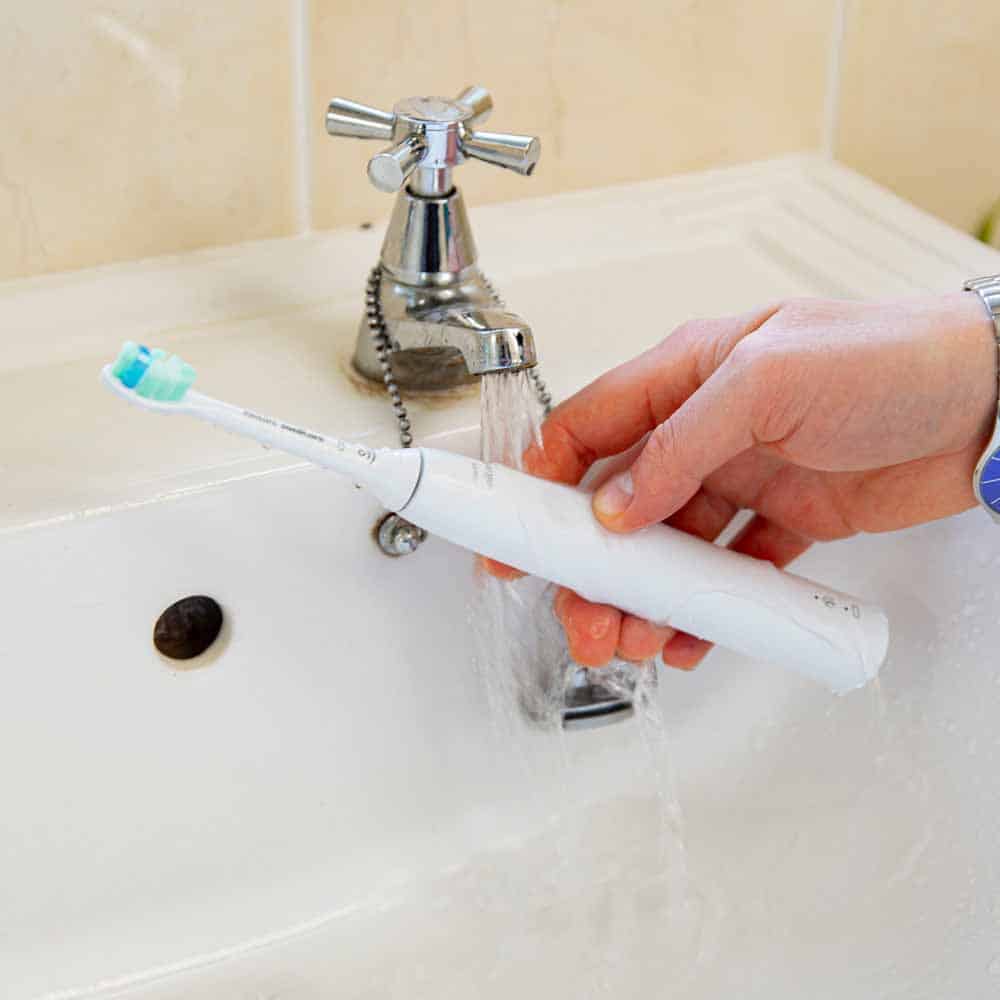
The 1000, 2000, 3000 and 4000 Series all have brush motors that offer 31,000 brush strokes per minute.
But, the 4000 Series motor has been tuned so that the ‘amplitude’ (the distance covered or the sweep angle of the bristles) is higher.
In daily use, this means the brush feels more powerful and the cleaning more thorough.
You might not desire more power and a deeper cleaning, but based on Sonicares data this does make somewhat of a meaningful difference to your oral health.
Plaque is the very reason we brush our teeth, so the more of it we can disrupt and remove the better.
Our hands-on testing is not scientific and we don’t verify the claims Sonicare makes. But, we can speak firsthand when we say the difference is noticeable, particularly when used side by side.
Of course, few will ever use side by side. And in reality, the cleaning offered by the 1000, 2000 and 3000 Series is more than sufficient.
If you have not used a power toothbrush before, the brushing sensation and experience you get will still feel more powerful than a manual toothbrush.
Existing electric brush users, notably Sonicare users might well be able to feel the difference in the brushing sensation, if you pick the 1100, 2100 or 3100
Do also be aware that many existing Sonicare toothbrushes actually offer up to 62,000 movements. None of these models do.
Movements are only 1 part of the equation in achieving clean teeth. And due to the way the 4100 Series has been tuned, it is very difficult to notice the difference, even though it does exist.
Of the models compared here, the 4000 Series can potentially provide the best cleaning results.
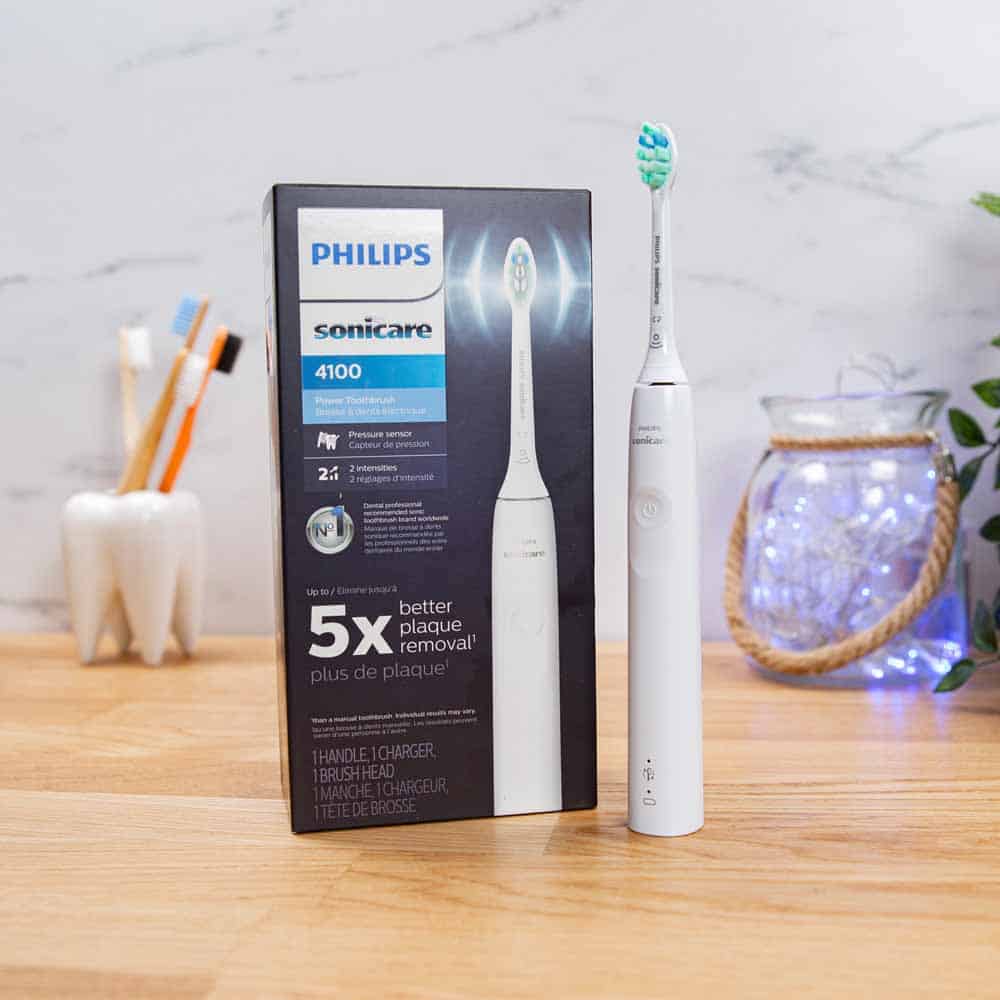
But complicating things further are the different brush heads and brushing intensities on offer across the range of models.
How much difference this makes is up for debate and there is a lack of reliable evidence. For most, it is not worth worrying about. More important is to brush regularly, for the right time and with the correct technique.
Is one better priced than the other?
Yes, but the price difference isn’t as great as you might expect.
The retail prices are as follows:
- 1100 - $29.99
- 2100 - $45.00
- 3100 - $59.99
- 4100 - $79.99
As you can see, the 1100 is the most affordable. This isn’t too surprising given it has the least features.
Whilst the 4100 is best, it is $50 more.
AdmittAdmittedly that is over twice the price of the 1100 Series, but given Sonicares most expensive model is $500, that isn’t much of a price difference.
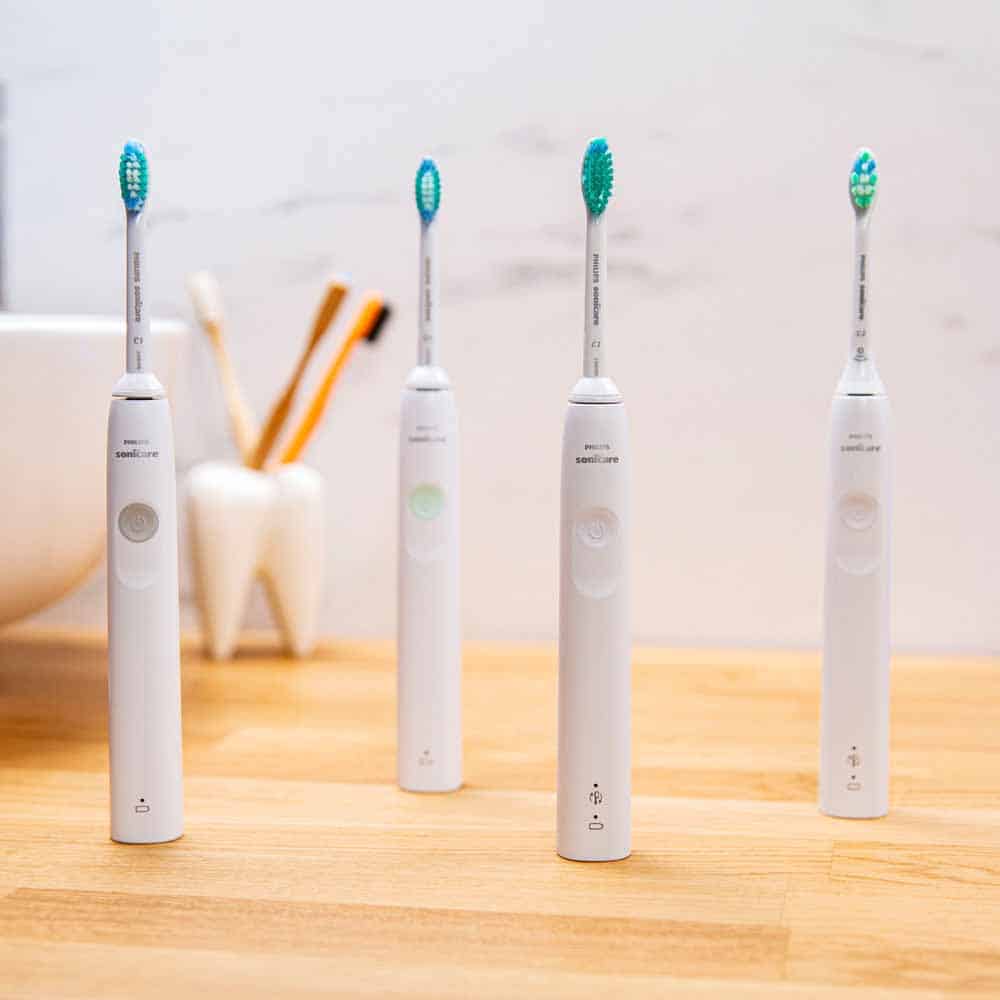
Within the power toothbrush market, it is quite common for the actual selling price to be a bit less than retail.
It does vary from one seller to another and prices change at different times of the year. But, it is quite a discount of around 20% is often achievable.
The only exception to this is the 1100 because it is so competitively priced already. You may save a 1 or 2 dollars, but not much
The discounted sales prices look as follows
- 1100 - $29.99
- 2100 - $40.00
- 3100 - $45-50
- 4100 - $65
Taking this into consideration the 4100 is now only $35 more expensive than the 1100, which really isn’t that great when you consider the extras you are getting.
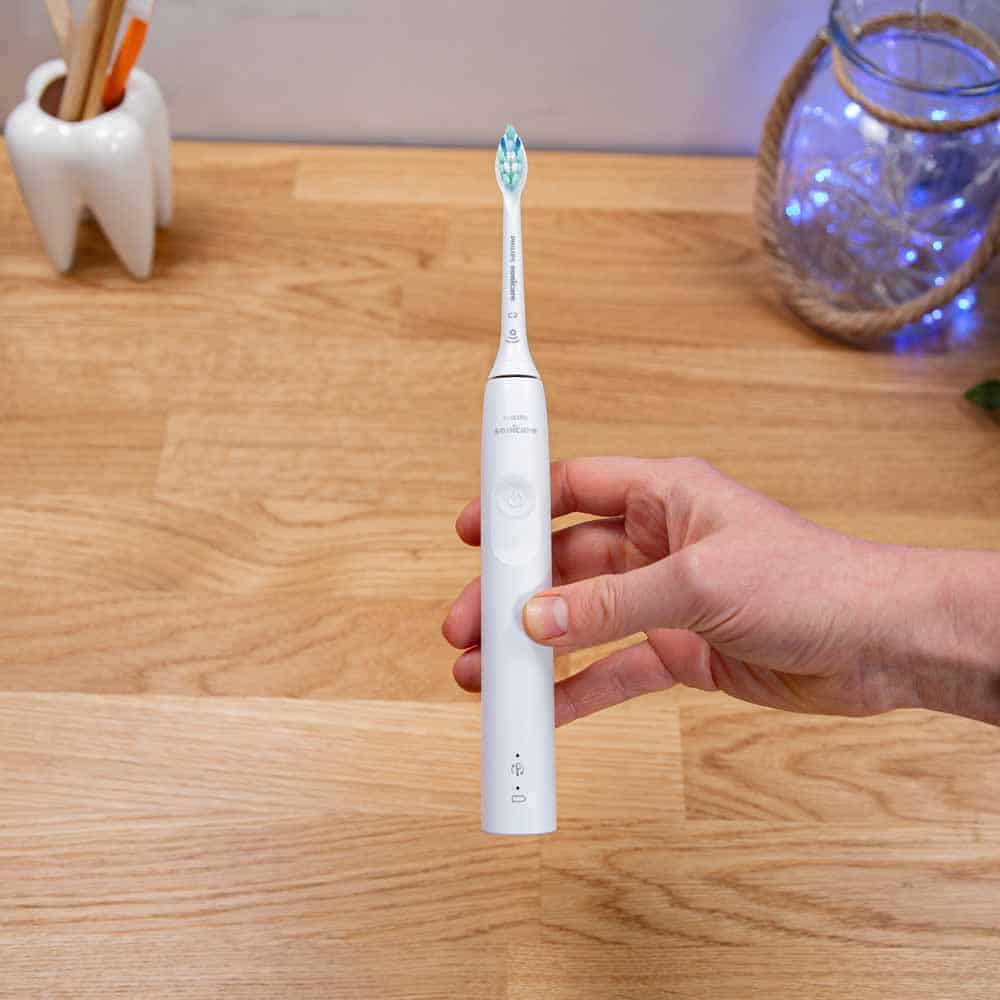
As you might have expected by now, there are added complications.
The 1000 can make use of Sonicares standard brush heads that do not have the RFID chip required for the BrushSync technology to work. These heads typically cost $10 per head.
The 2000, 3000 and 4000 can though use the BrushSync enabled head which often command a premium of $3 per head, so $13 in total.
Each can use the standard head, but you in turn lose the benefits of the brush head replacement reminder.
To give a benchmark, over 3 years of ownership (based on 1 user) the costs are as follows:
- 1100 - $140
- 2100 - $150
- 3100 - $193
- 4100 - $208
Therefore if you are on a budget, the 1100 proves itself to be best value. Over 3 years, however, the premium for the 4100 isn’t that significant.
Try not to let price be the primary factor in your decision. It could be worth waiting a little while longer to save the money, if you feel a more expensive brush will suit you better.
But, as I have stated before, any of these brushes can clean the teeth well.
Conclusion
All things considered, any of these brushes can clean the teeth better than a manual toothbrush.
But, when selecting between these 4 different series, it is the 4000/4100 Series that is my top choice.
It has the essential features that our in-house dentists recommend.
It gives the most satisfying cleaning results, even if the actual cleaning differences between each are hard to determine.
It is a good all round brush that blends performance with functionality and price.
For those with a tighter budget, the 1100 Series is a great 2nd choice and will still provide benefits to your oral health.







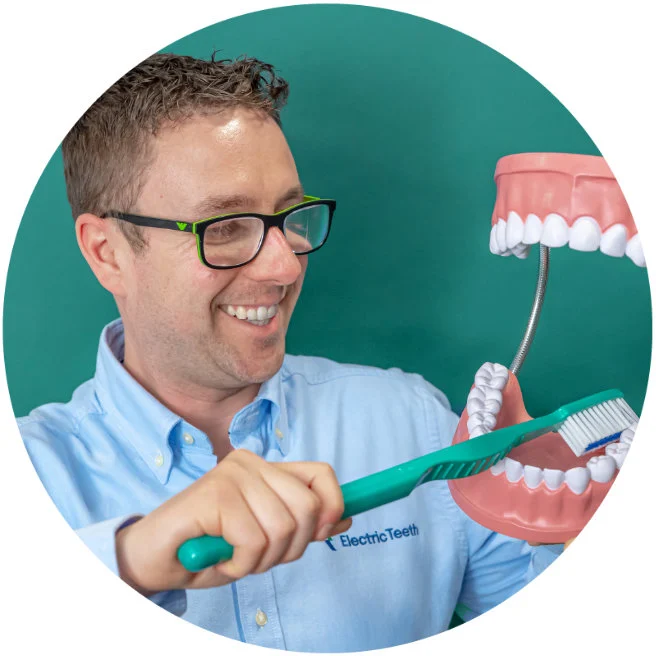
Are you sure your claim about the 4100 using a different motor setup than the 3100 is correct? It seems to me that the claimed difference in performance is entirely due to the different brush heads used. The C2 uses different bristles and is supposed to remove more plaque than the C1.
Also, CloudFare sucks. Please get rid of it on this website.
This informaiton came from Philips representatives themselves. I clarified this with them and have documented things to the best of my understanding.
I'm osrry you have run into issues with cloudflare. Can you provide more details for us to investigate?
This was super helpful, thank you!